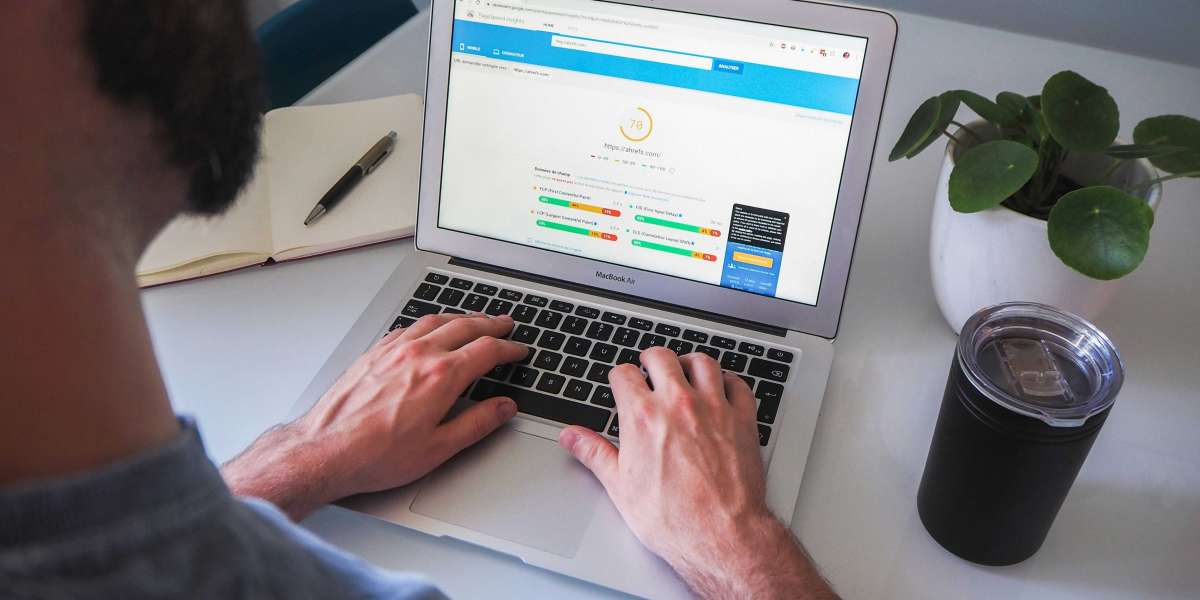SEO page analysis is a crucial process for improving your website's search engine rankings. It involves evaluating the SEO health of individual pages to ensure that they are optimized for search engines and align with best practices. Effective SEO page analysis helps identify weaknesses, optimize elements, and enhance user experience, ultimately seo agency driving more organic traffic. Here’s an in-depth guide on performing SEO page analysis and how it can boost your website’s performance.
What is SEO Page Analysis?
SEO page analysis is the process of evaluating a webpage to determine its effectiveness in meeting search engine optimization criteria. This audit covers on-page elements (like keywords, titles, and metadata), technical aspects (such as page speed and mobile compatibility), and content quality to create an actionable strategy for improving SEO performance.
Why is SEO Page Analysis Important?
A well-executed SEO page analysis:
- Improves search rankings and visibility.
- Enhances the user experience on your website.
- Increases engagement and conversion rates.
- Identifies opportunities for targeting new keywords and topics.
- Keeps your website competitive in ever-evolving search engine algorithms.
Key Steps in SEO Page Analysis
Keyword Analysis and Optimization
- Keyword Research: Start by reviewing your target keywords for each page. Ensure that these keywords are relevant to the page content and align with the search intent of your target audience. Tools like Ahrefs, SEMrush, and Google Keyword Planner can help identify high-potential keywords.
- Keyword Placement: Your primary keyword should appear in essential areas like the title, headers, introductory paragraph, meta description, and image alt text.
- Keyword Density: Avoid keyword stuffing, as search engines penalize pages that use keywords unnaturally. Aim for a balanced density where keywords appear naturally.
Meta Tags and Headers
- Title Tag: A strong title tag that includes the primary keyword helps search engines understand the page's topic. Ensure the title tag is under 60 characters to display correctly in search results.
- Meta Description: The meta description summarizes your content and is essential for improving click-through rates. Write a compelling description under 160 characters that includes relevant keywords to attract users.
- Header Tags (H1, H2, H3): Proper use of headers (especially H1 for the main heading) structures the content and aids readability. Each section should have relevant headers to help users and search engines navigate and understand the page.
Content Quality and Relevance
- Unique, High-Quality Content: Pages with original, well-researched content tend to rank better. Aim to provide valuable insights that address the user's intent.
- Content Structure and Readability: Use shorter paragraphs, bullet points, and subheadings to break up the text. This improves readability, especially on mobile devices.
- Keyword Variants and Related Terms: Include Latent Semantic Indexing (LSI) keywords, which are terms closely related to the main keyword. LSI keywords improve page relevance without overloading the primary keyword.
URL Structure
- Descriptive URLs: URLs should be concise and descriptive, ideally containing the main keyword. Avoid unnecessary words and special characters to keep URLs clean and user-friendly.
- Static URLs: Use static URLs instead of dynamic ones with parameters. Static URLs are easier for search engines to crawl and often rank better.
Image Optimization
- Image Alt Text: Each image on the page should have descriptive alt text that includes keywords where relevant. Alt text improves accessibility and helps search engines understand image context.
- Image Compression: Large image files slow down page load speed, affecting user experience and SEO. Compress images before uploading and use optimized formats like WebP or JPEG.
Internal Linking
- Strategic Internal Links: Use internal links to connect related content on your website. This keeps users on your site longer and distributes page authority across your pages.
- Anchor Text Optimization: The anchor text for internal links should accurately describe the destination page, which helps users and search engines understand the link's context.
Mobile Friendliness
- Responsive Design: With mobile-first indexing, Google prioritizes mobile-optimized sites. Ensure that your page is responsive, adapting to different screen sizes and providing a seamless experience.
- Mobile User Experience: Test your page’s appearance and usability on various mobile devices. Elements like buttons, forms, and navigation should be easy to use on smaller screens.
Page Load Speed
- Optimize for Speed: A slow-loading page can hurt both user engagement and search rankings. Tools like Google PageSpeed Insights and GTmetrix help identify speed issues and provide recommendations.
- Reduce Unnecessary Elements: Limit heavy elements, such as large images, excessive scripts, and unnecessary plugins. Minimize the use of JavaScript and CSS files to improve loading speed.
Technical SEO Elements
- Schema Markup: Adding schema markup (structured data) helps search engines better understand your content, potentially increasing your chances of appearing in rich snippets.
- Canonical Tags: Use canonical tags to prevent duplicate content issues. Canonicals tell search engines which version of a page to index if multiple similar pages exist.
- Robots.txt and XML Sitemap: Ensure that your robots.txt file is properly configured, and your XML sitemap is up-to-date. These files help search engines index your site more efficiently.
User Experience (UX)
- Bounce Rate and Engagement Metrics: Monitor metrics like bounce rate, session duration, and pages per session. High bounce rates can negatively impact SEO, indicating that users aren't finding what they're looking for.
- CTAs and Visual Engagement: Use calls-to-action (CTAs) and engaging visuals to encourage users to interact with your page. A positive UX can lead to higher conversion rates and better SEO performance.
Tools for SEO Page Analysis
Several tools can simplify the process of SEO page analysis:
Google Analytics and Search Console
- These free tools from Google provide insights into user behavior, search terms driving traffic, and any technical issues affecting indexing and rankings.
SEO Audit Tools (e.g., Ahrefs, SEMrush, Moz)
- These tools offer comprehensive SEO audits, including keyword analysis, backlinks, and technical SEO issues. They also provide actionable insights to improve page performance.
Page Speed Testing Tools (e.g., Google PageSpeed Insights, GTmetrix)
- Assess your page’s load speed and receive suggestions to optimize performance. These tools evaluate mobile and desktop load times separately to help you prioritize improvements.
Content Analysis Tools (e.g., Clearscope, Surfer SEO)
- Content analysis tools analyze the top-ranking pages for given keywords, offering recommendations on keyword usage, content length, and structure to help your page compete effectively.
Best Practices for SEO Page Analysis
- Perform Regular Audits: SEO is an ongoing process. Regularly audit your pages to identify issues and adapt to algorithm changes.
- Prioritize User Intent: Align your content and seo page analysis keywords with what users are searching for and expecting to find. Google values relevance and user satisfaction.
- Focus on Both Content and Technical SEO: High-quality content must be supported by a technically sound website to rank well.
- Monitor Analytics: Track key metrics to understand which pages are performing well and which need further optimization.
Benefits of SEO Page Analysis
- Improved Search Rankings: A page optimized through comprehensive analysis is more likely to rank higher on search engine results pages (SERPs).
- Enhanced User Experience: Pages that load quickly, are mobile-friendly, and offer valuable content keep users engaged longer, leading to increased conversions.
- Higher Conversion Rates: When users find relevant content that meets their needs, they’re more likely to take the desired actions, such as making a purchase or signing up for a service.
Conclusion
SEO page analysis is a critical step in achieving long-term SEO success. By systematically evaluating and optimizing key elements such as keywords, meta tags, content quality, technical factors, and user experience, you can create pages that perform well in search results, attract the right audience, and drive sustainable traffic growth. Remember, SEO is a continuous process; regular analysis, combined with industry best practices, will keep your pages optimized and competitive.
Visit Us: https://www.a1jinternational.














